Neuroimaging, or brain scanning, produces images of the brain or other parts of the nervous system. Current neuroimaging techniques typically show the brain’s structure and functions.
Neuroimaging is important within psychology to allow in-depth study of what certain areas of the brain are responsible for, as well as being able to identify brain differences in those who may have brain disorders or mental health conditions.
Early ideas about how the brain functions date back as far as thousands of years ago, when trepanation became a common surgical procedure. This method involved boring holes into the skull and was used across many cultures, possibly in an attempt to relieve brain disorders such as epilepsy, or for spiritual reasons.
Although this would not have been recognized as epilepsy or other known brain disorders back then, people would use trepanation on people who were behaving in an ‘abnormal’ manner, to let out what were believed to be evil spirits.
The ancient Greek philosopher Aristotle (in approximately 335 BCE) held the belief that the brain was simply a radiator, in which its purpose was to stop the body from overheating, claiming that the heart was the more superior organ.
However, in approximately 387 BCE, Plato, who was another Greek philosopher, suggested that the brain was the seat of all mental processes and therefore had a larger role than was previously believed.
In 170 BCE, Roman physician Galen theorized that human moods and dispositions are caused by the four ‘humors’, the liquids held in the brain’s ventricles. This idea was very influential and persisted for more than 1000 years, used by generations of physicians.
It wasn’t until 1664 when Oxford physiologist Thomas Willis published a diagram of the first ‘brain atlas’. This atlas located various functions of the brain in separate brain ‘modules’.
In 1909, Korbinian Brodmann described 52 cortical areas of the brain, based on their neural structure. These areas, known as Brodmann areas, are still used today.
Before neuroimaging techniques were invented, scientists were unable to discover much about the brain and its functions.
Aside from making educated guesses based on observing people’s behavior, the only other method of examining brains was through post-mortem examinations. They would find people who displayed non-typical behaviors or functions, mostly due to injury, then wait until they had died to examine the location and extent of the damage.
A famous example of this is the case of Phineas Gage, who had an iron rod impale part of his brain, which impacted his personality as a result. This case was paramount in the understanding that personality may be localized to one area of the brain.
Similarly, Paul Broca and Karl Wernicke, between 1862 and 1874, examined the brains of patients with language problems. From completing post-mortems, they discovered Broca’s area and Wernicke’s area, which are fundamental language regions of the brain.
Early techniques
Phrenology
Phrenology was a hugely popular method of early neuroimaging in 19th century USA and Europe.
This concept was introduced by physician Franz Joseph Gall, who theorized that various faculties and personalities were localized in the brain and could be read by feeling the skull’s contours.
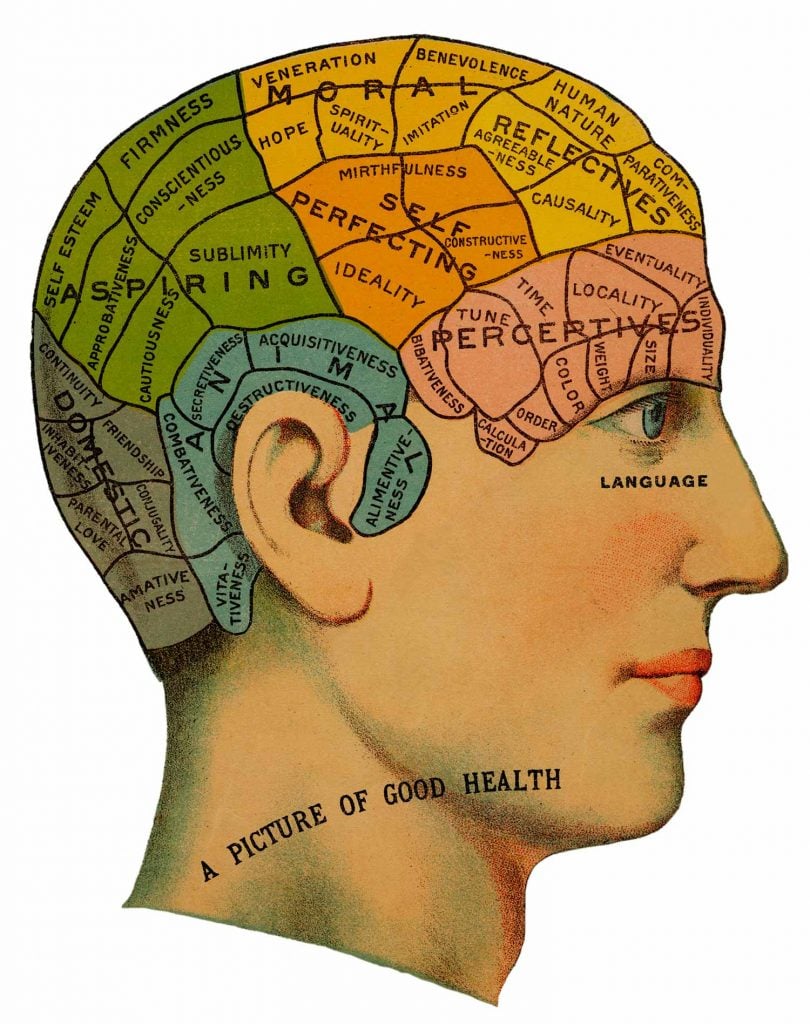
Gall believed that the strongest traits were the largest, as so would appear as bulges. Some of the regions Gall identified through his methods used words such as ‘cautiousness’, ‘friendship’, hope’, ‘benevolence’, and ‘destructiveness’.
In his earlier studies, Gall used phrenology on jail inmates and those who lived in psychiatric asylums, claiming that he was able to detect large areas of ‘criminal’ in their heads.
Gall’s methods lacked scientific rigor, and he ignored any evidence that contradicted his ideas, long since being identified as a pseudoscience.
Despite this, Gall’s idea that brain functions are localized to certain brain areas turned out to be accurate. Researchers have since become interested in the concept of localization of brain function.
‘Human circulation balance’
In the 1800s, an Italian physiologist named Angelo Mosso created a contraction which is thought to be the first neuroimaging technique. Mosso invented the ‘human circulation balance’, transcripts of which have only recently been rediscovered.
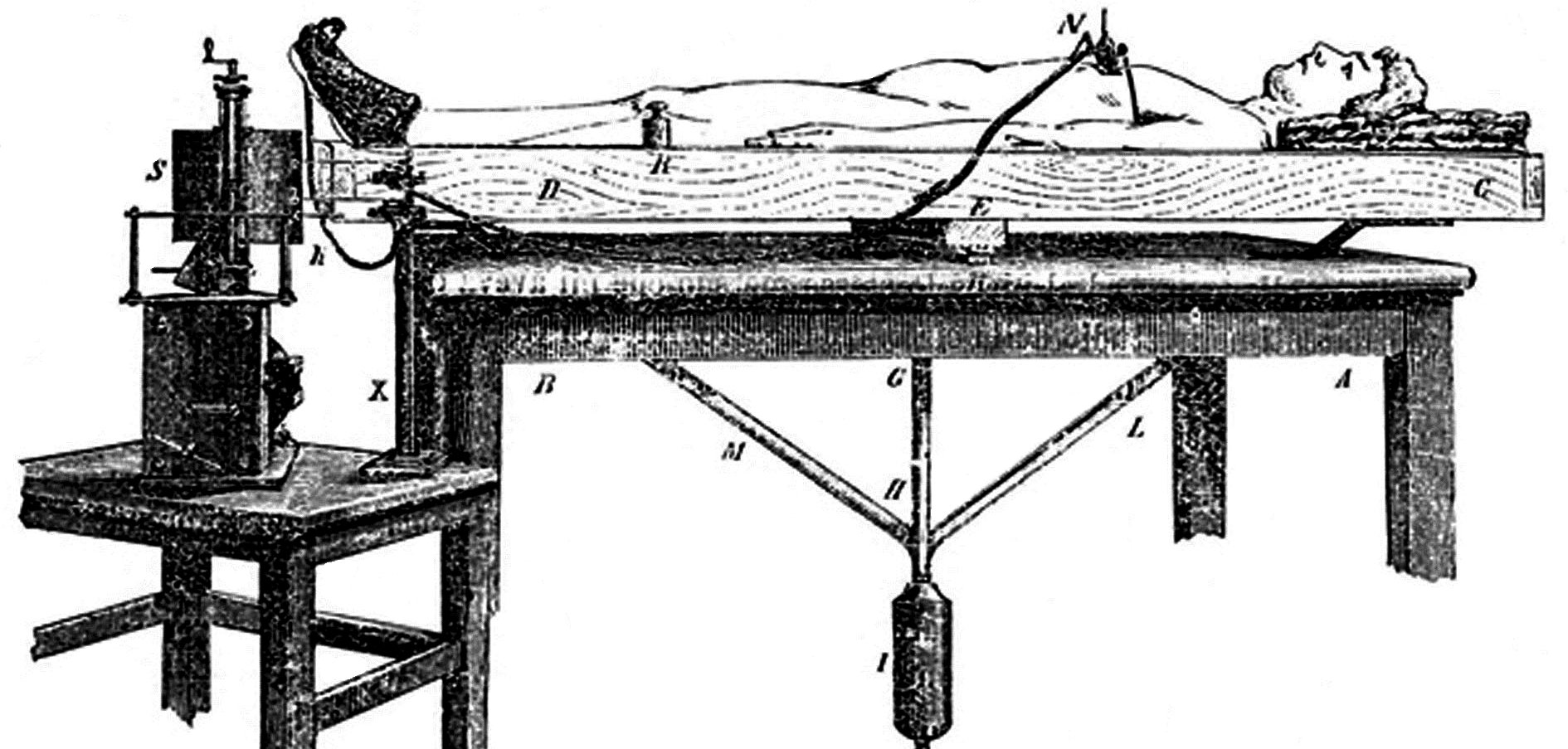
This technique was a non-invasive measure of the redistribution of blood during intellectual and emotional activities. Mosso’s invention operated on the idea, relatively untested at the time, that the brain required more blood when it works harder.
Documents found regarding the technique suggest that Mosso claimed his machine could also detect the varying weights of mental activities. For instance, reading a book on philosophy would tip the balance more than reading a newspaper or something lighter.
The precise workings of the human circulation balance remain mostly unknown, although drawings depict a table in which a patient is laying down upon and strapped to.
Mosso’s invention, although no longer used today, shares some similarities to neuroimaging techniques used today. Functional magnetic resonance imaging (fMRI) is a modern method that shows which parts of the brain are working harder through tracking blood flow changes.
Pneumoencephalography
In 1918, an American neurosurgeon called Walter Dandy introduced a new technique of using x-ray images of the ventricular system within the brain.
This was done by injecting air into one or both of the ventricles of the brain. Dandy also noted that injecting air into the cerebral ventricles in place of the cerebrospinal fluid also helped in producing X-ray images of the brain.
This technique was named pneumoencephalography and involved removing the cerebral spinal fluid and replacing it with air. As air is more permeable to X-rays than bone, any changes in the organization of the ventricle are more visible, being able to detect tumors that may be producing these changes.
Although this method was important in localizing brain damage at the time, it was an extremely painful procedure and was associated with a range of side effects, such as headaches and vomiting, often lasting some time after the procedure.
Pneumoencephalography was performed until the late 1970s before being replaced by less invasive neuroimaging techniques.
Cerebral angiography
In the 1920s, a professor of neurology called Egas Moniz was reportedly the first person to complete a radiographic image of the brain on a living person. This neuroimaging method is called cerebral angiography which uses x-rays to produce an image called a cerebral angiogram.
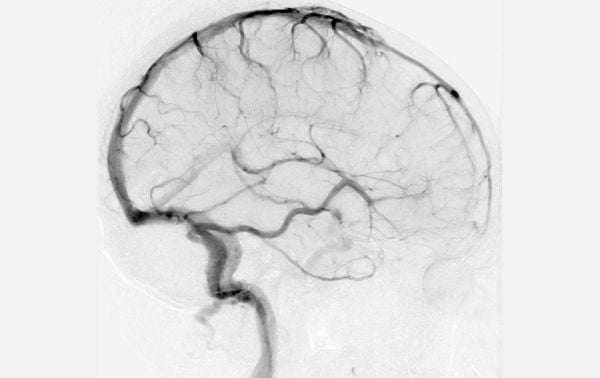
This image is used to identify blockages or any other abnormalities in the blood vessels of the head. Moniz hypothesized that being able to view blood vessels in the brain by X-rays would allow for more precise localisations of tumors on the brain.
This method involves injecting radioactive dyes into the blood. This dye helps the X-ray create a clear picture of the blood vessels for analysis.
This method is still in use today, although it is carried out differently now.
When first introduced, the injection would take place directly into the carotid artery.
It has since been replaced by threading a catheter from a distant artery due to associated risks.
Modern Techniques
EEG
Hans Berger, a German physiologist, was known as the person to first use an electroencephalogram (EEG) on humans. The EEG was invented by Berger in 1924 and is a neuroimaging test that is used to detect electrical activity in the brain.
Berger decided to measure the brain’s electrical activity in the hope that this would provide accurate insight into mental processes. An EEG is made up of small metal discs called electrodes, which attach to the scalp of individuals.
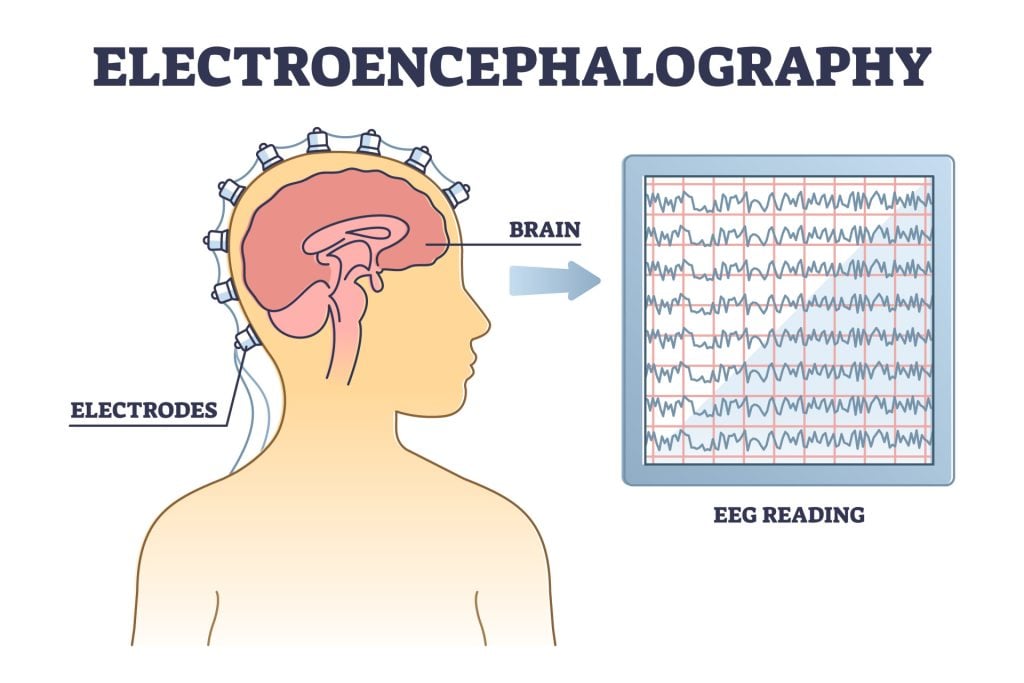
Early methods of using EEG involved inserting silver wires under the patient’s scalp, then using silver foil electrodes attached to the head by a rubber bandage.
The electrical impulses that are being communicated in the brain get recorded in wave patterns on an EEG recording. Using the EEG, Berger was also the first to describe the different waves that were present in the typical functioning brain and those who may have had conditions such as epilepsy.
EEGs have been used for many years and are considered safe, causing no discomfort as the electrodes do not produce any sensations and are non-invasive.
Another advantage of EEG is that it has high temporal resolution, meaning it can pick up frequencies very quickly.
Despite this, a main limitation of EEGs is that it has poor spatial resolution, meaning it cannot pinpoint exactly where in the brain the electrical activity is taking place.
PET
Work by Gordon Brownell and his colleagues at Massachusetts General Hospital in the 1950s contributed significantly to the development of positron emission tomography (PET) technology.
Tomographic imaging techniques were developed further by Michel Ter-Pogossian and colleagues in 1975, and PET has now become a popular imaging device in the medical and psychological world. PET scans work by measuring the levels of sugar glucose in the brain to determine where neurons are firing from.
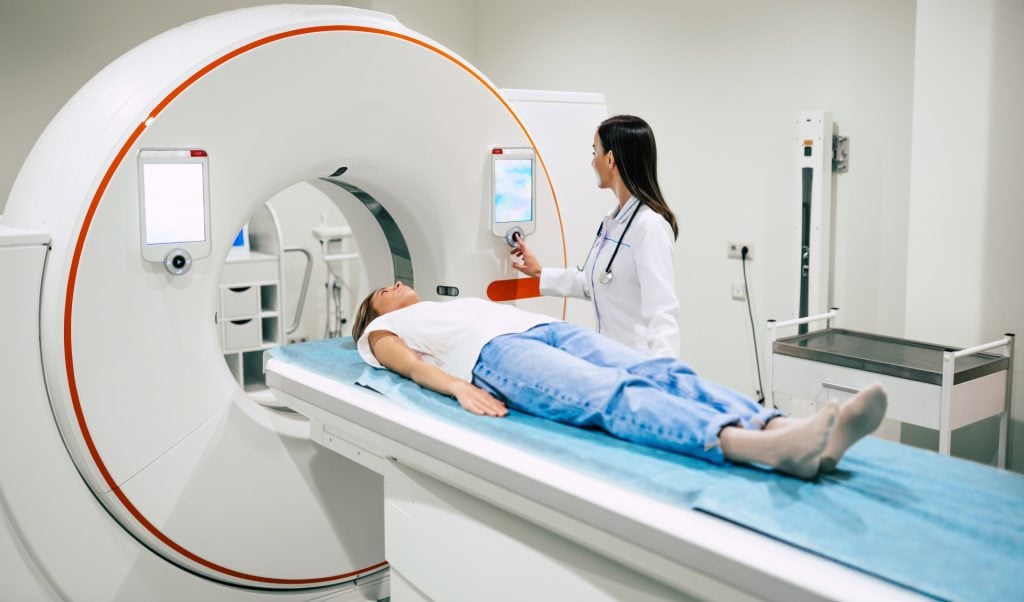
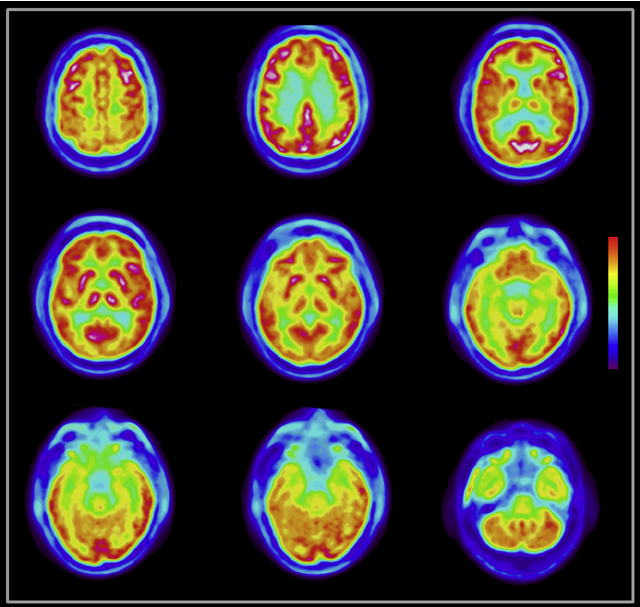
This can work as neurons use glucose as their fuel. During a PET scan, a radioactive tracer substance is injected into the blood.
When parts of the brain become active, the blood which contains the tracer is sent to deliver oxygen, creating visible spots which can then be detected and used to create a video image of the brain. Areas that become active will be using more glucose than inactive areas.
Because this is visible on the PET scanner, the functions of these areas can be highlighted and can help detect any abnormalities.
PET scans, however, are costly and invasive, as well as only being able to locate generalized areas of brain activity, rather than specific locations.
MRI
Magnetic resonance imaging (MRI) is another modern neuroimaging technique that was invented in the 20th century from the contributions of many researchers.
In 1971, Paul C. Lauterbur developed magnetic resonance imaging to encode spatial information into a signal by using magnetic field gradients.
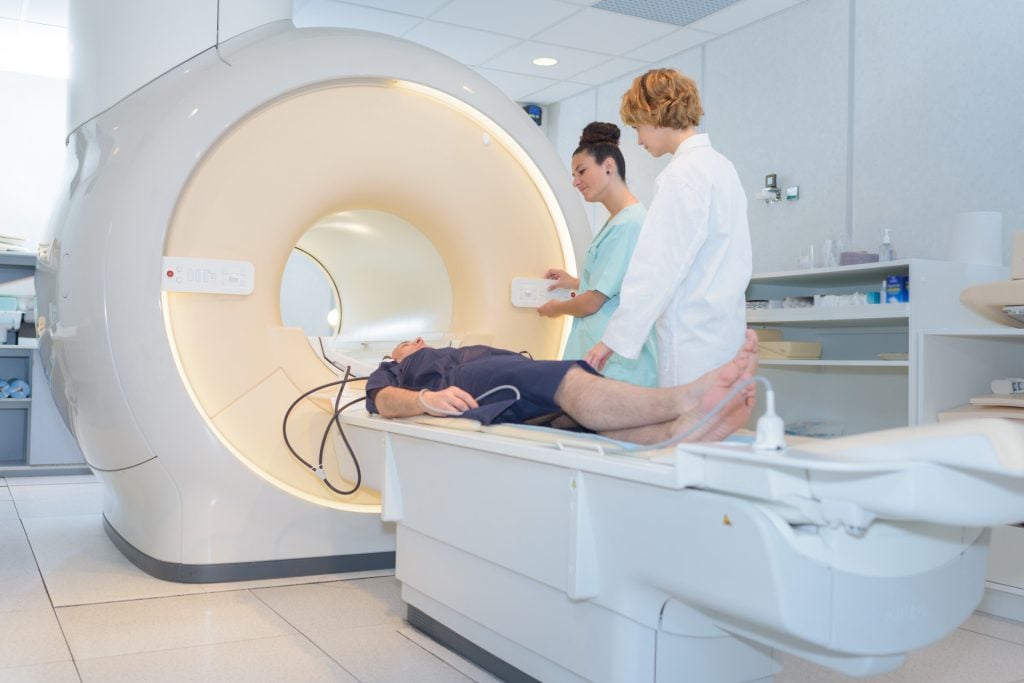
As well in 1971, doctor and professor Raymond Damadian published a paper describing that tumors and normal tissue could be distinguished by the MRI, and he was reportedly the first to perform a full body scan of a human in 1977 to diagnose cancer.
The first MRI scanners were installed in the early 1980s and have been used since then to detect medical conditions, as well as being fundamental in neuroscience to produce images of the brain structure. An MRI uses magnetic fields to create these images.
They are non-invasive and have few health risks, so they can be safely used on all people, including children. However, a disadvantage of MRI is that individuals have to keep still for long periods in a noisy and cramped space.
Recent developments
As recent as 1991, a variation of MRI was invented, known as functional magnetic resonance imaging (fMRI). fMRI is a brain-scanning technique that works by measuring the blood flow in the brain when a person is performing a task.
The main idea behind fMRI is that there is more neuronal activity in the brain during a task and that viewing this activity will lead to a greater understanding of how brain structures function. fMRIs are an extension of MRIs which just show the structure of the brain.
In fMRIs, any activity in the brain will ‘light up’ on the scanner due to blood flow being flooded in that area. fMRIs make it possible to show when exactly activity is occurring and how brains can change with different experiences.
fMRIs give psychologists a new perspective on phenomena such as what happens in the brain when we are dreaming or listening to music and whether certain tasks produce different responses in the brain.
fMRI is a non-invasive technique that also has high spatial resolution, meaning it is able to pinpoint almost the exact location where activity is occurring in the brain.
fMRI is also able to record signals from all regions of the brain, unlike other methods such as EEG that are better at detecting activity on the surface of the cortex.
However, fMRI has poor temporal resolution, with responses peaking about 5 seconds after neuronal electrical activity occurs. This makes it difficult to distinguish stimuli to response, and therefore interpretations of fMRI data need to be analyzed carefully.
References
American Psychological Association. (2014, August). Scanning the Brain. https://www.apa.org/action/resources/research-in-action/scan
Artico, M., Spoletini, M., Fumagalli, L., Biagioni, F., Ryskalin, L., Fornai, F., Salvati, M., Frati, A., Pastore, F. S., & Taurone, S. (2017). Egas Moniz: 90 Years (1927-2017) from Cerebral Angiography. Frontiers in neuroanatomy, 11, 81.
Britannica, T. Editors of Encyclopaedia (2009, February 9). Pneumoencephalography. Encyclopedia Britannica. https://www.britannica.com/science/pneumoencephalography
Carter, R. (2019). The Human Brain Book: An Illustrated Guide to its Structure, Function, and Disorders (3rd ed). DK.
Grant, F. C. (1927). Indications for and technic of ventriculography. Radiology, 9 (5), 388-395.
Lumen (n.d.). Brain Imaging Techniques. Retrieved June 8, 2021, from https://courses.lumenlearning.com/boundless-psychology/chapter/brain-imaging-techniques/
Sandrone, S., Bacigaluppi, M., Galloni, M. R., Cappa, S. F., Moro, A., Catani, M., Filippi, M., Monti, M. M., Perani, D. & Martino, G. (2014). Weighing brain activity with the balance: Angelo Mosso’s original manuscripts come to light. Brain, 137 (2), 621-633.
Van Wyhe, J. (2000). The History of Phrenology. Victorian Web. https://victorianweb.org/science/phrenology/intro.html

